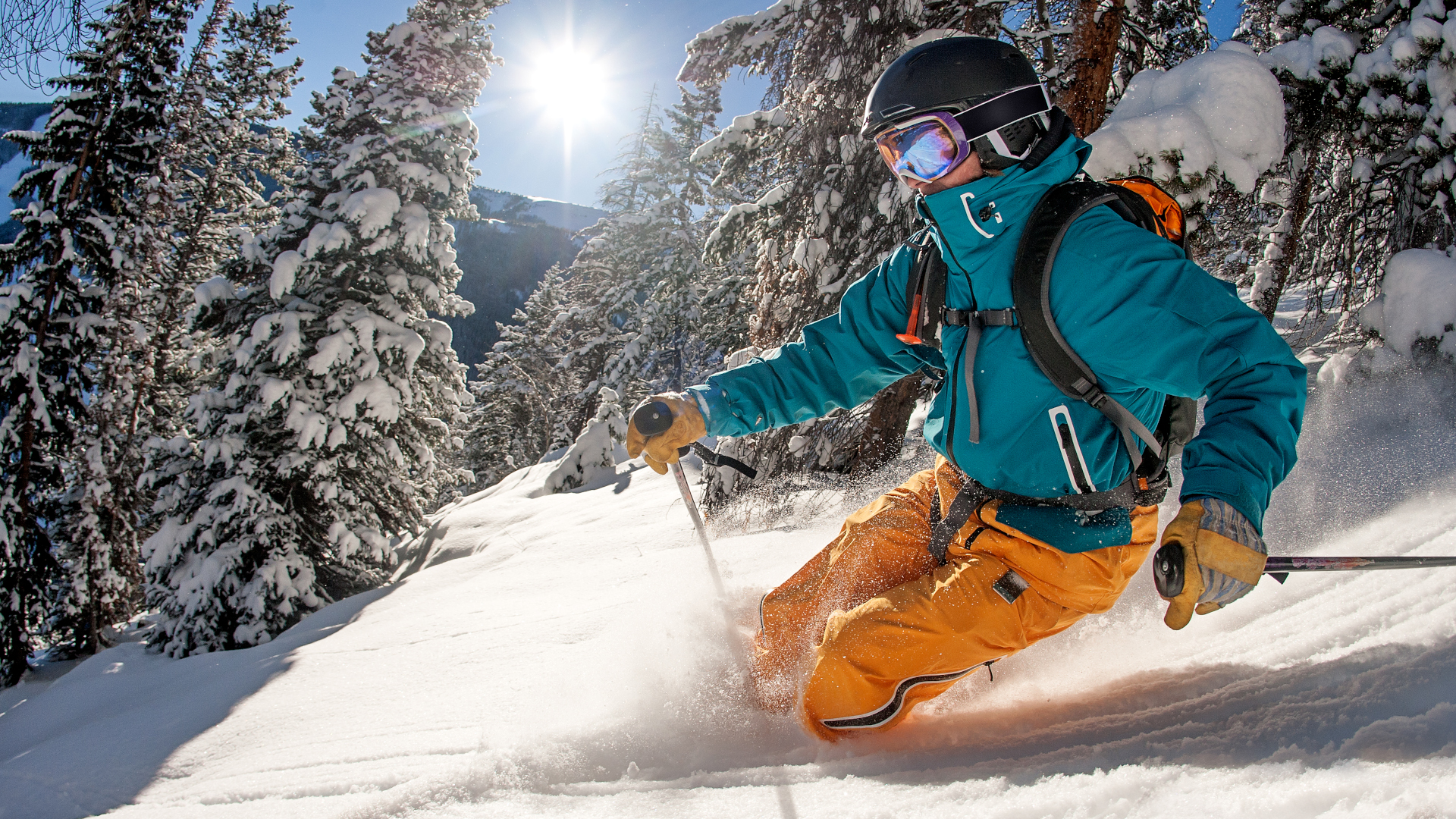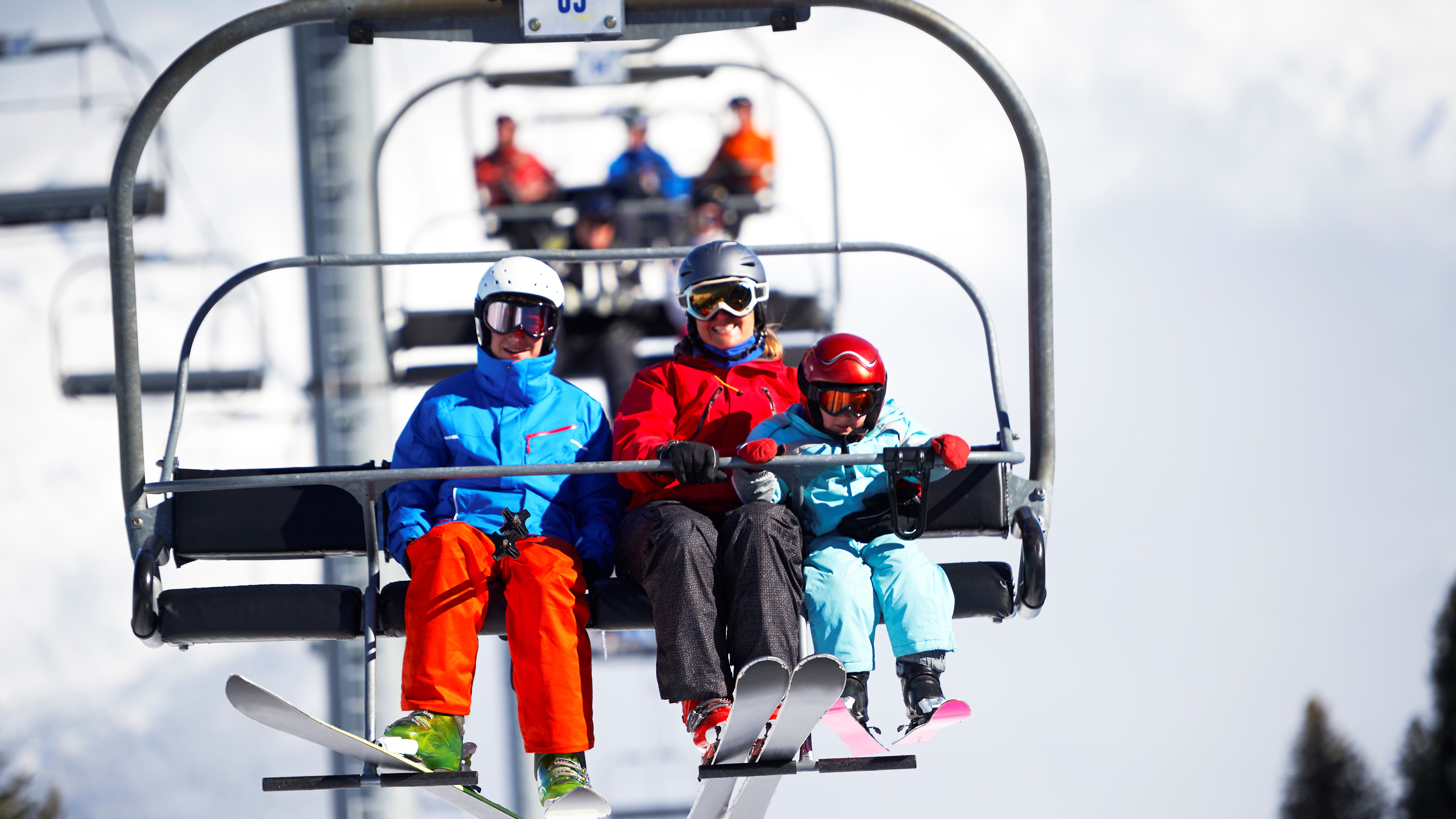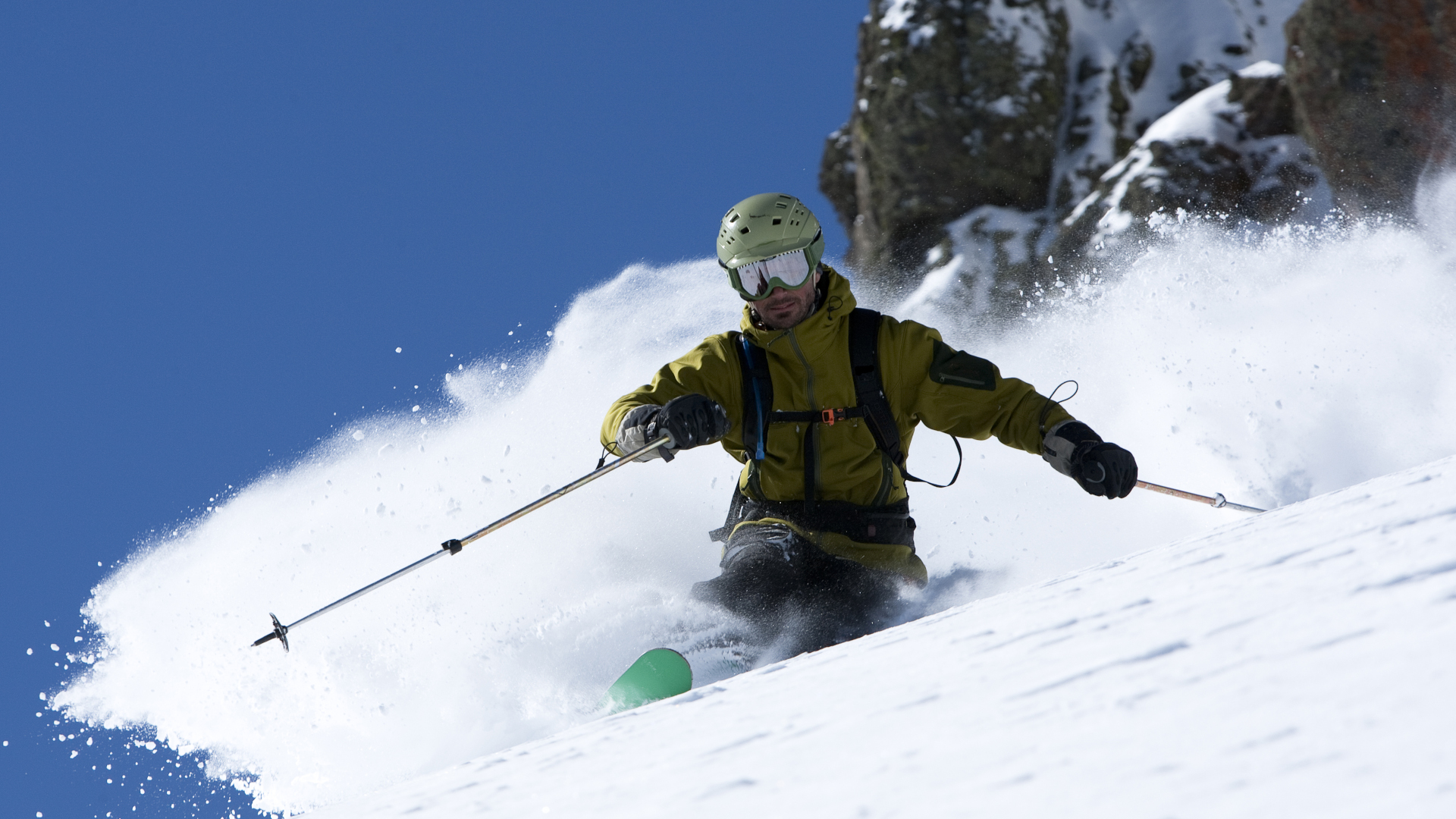Should you ski with a backpack?
Do safety concerns outweigh your need for a sandwich? We weight the pros and cons skiing with a backpack, when it’s a good idea and how to do it safely

Should you ski with a backpack? After all, snacks at your average ski resort come with eye-watering price tags and you might want to carry extra layers of clothing on cold days. It all sounds like a simple question of convenience, but it actually comes down to the very important issue of skiing safety.
How dangerous can wearing a ski backpack be, you ask? Well in 2017, a news story did the rounds about a skier at A Basin getting hung up on the chairlift by his backpack. Sometimes these stories are accompanied by viral videos of a skier looking foolish, but this story wasn’t funny. This man was hanging by his neck so he quickly lost consciousness while skiers below were helpless. The only reason he survived is because a quick-thinking ski instructor, who fortuitously also happened to be a slackliner, quickly scaled the lift tower and managed to clamber along the lift cables (while wearing ski boots, no less!), catch a knife that was tossed up from below and cut him loose. It made for great social media clicks, but his survival was clearly a question of mere luck and the story really highlighted the dangers of skiing with a backpack.

Whether you’re new to skiing, skiing with kids or trying to ski on a budget, you may be considering skiing with a backpack so you can carry essentials, and there are some advantages to doing so, but it can also be dangerous. In this article, we outline the pros and cons of skiing with a backpack, what you might carry in a backpack and how to do it safely.
Should you ski with a backpack?
First things first, if you’re backcountry skiing, there’s absolutely no reason you shouldn’t ski with a backpack and in fact, it would be crazy not to. So in that case, you should definitely carry a backpack as part of your backcountry ski gear as it will allow you to carry emergency gear, spare clothing (since your clothes are likely to get sweaty and damp when you’re uphill skiing) and of course, energy provisions. Here’s a short list of items you might carry in your backpack for backcountry skiing:
- An extra base layer
- Ski goggles (wear sunglasses for the uphill to avoid foggy goggles)
- Water bottle
- Sunscreen and chapstick
- Lunch and snacks
- Phone
- Avalanche gear (beacon and shovel)
- Map
- First aid kit
- Camping knife
- Headlamp
If, however, you’re going to a resort for some alpine skiing, you’re going to have to ride the chairlift every time you want to take a run, which can be complicated and dangerous, so you’ll want to think twice about whether or not you really need to carry a backpack. To help you decide whether or not you need a backpack for resort skiing, let’s look at the pros and cons of skiing with a backpack.

Pros of skiing with a backpack
Despite the cautionary tale at the beginning of this article, there are some advantages to skiing with a backpack. You definitely don't need to carry all that safety gear for resort skiing, but if you do carry food and water, you can also save yourself a lot of money. If you’re skiing with the whole family, you could probably spend a month’s salary on food and snacks for everyone, and you might have all kinds of extra clothing and comfort items that you want to stash in a backpack. Smaller resorts might make it easy for you to just trek to and from a ski locker or your car when you need gear, while skiing at a larger resort might mean you won’t be anywhere near your car until it’s time to go home and you’ll want to carry everything you need for the day.

Cons of skiing with a backpack
Presuming you’re a decent skier and you’re wearing a lightweight backpack that contours to your body and doesn’t affect your ability to make turns, there is really only one disadvantage to skiing at a resort with a backpack, but as you now know, it’s a biggie. Backpack straps can and do get caught up in chairlifts, which can quickly turn into a life-threatening situation. For this reason, backpacks have been banned at some resorts. At best, they also push you forward a bit when you're on the chairlift, which can feel (and be) a bit precarious, especially when you factor in the slippery nature of ski pants. The best way around this is simply to not ski with a backpack, which when you look around you, you’ll realize is what most people are doing.
All the latest inspiration, tips and guides to help you plan your next Advnture!
So how do you manage to ski without a pack? Basically, you start by reducing the amount of gear you need. You can do this by skiing for shorter amounts of time, meaning you just go up for a couple of hours instead of a whole day. You also take advantage of the available services on the hill. Most lodges will have free drinking water while some even supply sunscreen stations, and you can eat a big breakfast before you go and just carry a snack bar to keep you going until apres. If you’re skiing all day, of course you can bite the bullet and pay for lunch and snacks. You might pay $30 for a mediocre sandwich but at least you won’t die on the chairlift or end up in a viral video.

If you are able to reduce your load down to a protein bar, your phone, chapstick, credit card and keys, you can easily just use the pockets in your ski jacket and ski pants to carry everything, although this is a good time to note that when shopping for these garments, you do want to make sure they have lots of large pockets. Use the thigh pockets on your ski pants and chest pockets of your jacket so that you’re gear doesn’t get in the way when you’re on the lift. Our guides to the best ski jackets for men and ski jackets for women are full of well designed options.
If, however, you are going to be making the most of your ski vacation by skiing full days with kids in tow and bringing your own lunch, keep reading for our best tips for skiing with a backpack.
How to ski with a backpack
If you’re going to ski with a backpack, make sure you follow these handy hacks for skiing safely with a backpack:
1. Go light and streamlined
First and foremost, choose a lightweight, streamlined pack that contours to your body and don’t overpack it. This will ensure that the weight and bulk doesn’t interfere with your skiing. Adjust it properly so it fits well while you're skiing.

2. Remove your backpack on the lift
It's definitely a good idea to wait until you're comfortable getting on and off a chairlift before you try skiing with a backpack. When you’re in the lift line, unfasten the chest strap and swing it off one shoulder so it’s hanging around the front of your body. Once you load the chairlift, sit with it on your lap so that it’s not interfering with your ability to sit properly on the chair, or at risk of catching on the chair. If you’re on a lift with a foot rest, this will be annoying, since the bar goes in between your legs, but it’s still safer than wearing your backpack on the chairlift.
When you’re unloading, keep your backpack on one shoulder or even wear it on the front of your body until you’re in a spot that’s safe to stop and put it on properly.
3. When in doubt, don’t dismount
If you mess up and ride the chairlift while wearing your backpack, when you get close to unloading you’ll want to be extra vigilant and make sure your backpack straps aren't caught on anything. If they are caught up on the chairlift, do not panic and try to unload. Stay on the chair while it rides around the bullwheel which will trigger the alarm and bring the lift to a halt while you get untangled. Yes, people will jeer at you and call you a Jerry, but at least you’ll be alive.
Julia Clarke is a staff writer for Advnture.com and the author of the book Restorative Yoga for Beginners. She loves to explore mountains on foot, bike, skis and belay and then recover on the the yoga mat. Julia graduated with a degree in journalism in 2004 and spent eight years working as a radio presenter in Kansas City, Vermont, Boston and New York City before discovering the joys of the Rocky Mountains. She then detoured west to Colorado and enjoyed 11 years teaching yoga in Vail before returning to her hometown of Glasgow, Scotland in 2020 to focus on family and writing.

